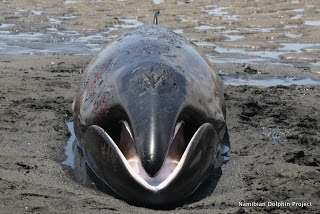How many different kinds of whales are there? How many can you
name? How did they get their names? My name is David and I want your help with a book I'm putting
together, in which I will seek to propose new names for whales in
English, based on or inspired by other languages and from a better
understanding of these animals. This blog is here to provide information about
those whales for anyone who is interested in helping me but may not be familiar
with the peculiarities of the different species. I would invite you to do your own
research, of course, but I hope this will be a good starting point for you, and
if you would like to help, you can contact me through this blogger site or else
at davidshewry@hotmail.com
The reason I want to do this is because I feel
that some of the English names for whales are either too dull and unimaginative to do justice to the amazing creatures
that have been given them, or else the names are in some way rather
undignified. It seems to me that our understanding of and attitude towards the
natural world has changed considerably and so perhaps it's time for our
nomenclature to catch up. Countries are frequently renamed - why not whales?
 |
| Image of Herman Melville's Moby Dick |
 |
| 'Monstro' from Disney's Pinocchio |
 |
| Jonah and the Whale Tobolsk - Russian 18th Century |
A large amount of the
work of marine biology has been conducted and dominated by English-speaking
organisations, and English tends to be a dominant language in the global
scientific community, so the names for whales in other languages are often literal
translations of English (or sometimes French) names, so translating them back
into English gets us nowhere. How, then, do we go about this?
 |
| Beluga choir |
 |
| Whale hunting equipment |
 |
| 6th Century Greek vase depicting Heracles slaying Ketos (κῆτη) |
There are broadly considered to be 8 families of whales, which include Kogiidae (the rorquals), Iniidae (right whales), Cetotheriidae (the pygmy right whale), Eschrichtiidae (the gray whale), Monodontidae (belugas and narwhals), Physeteridae (the sperm whale), Kogiidae (the dwarf and pygmy sperm whales), and Ziphiidae (the beaked whales). I shall say a little about each of the species within these families, in turn. Let's start with the baleen whales (also known as Mysticeti - from the Greek meaning 'moustache whale'), and with that group of baleen whales known as the rorquals - humpbacks, fin whales, blue whales, sei whales, bryde's/eden's, omura's and minke whales.















































